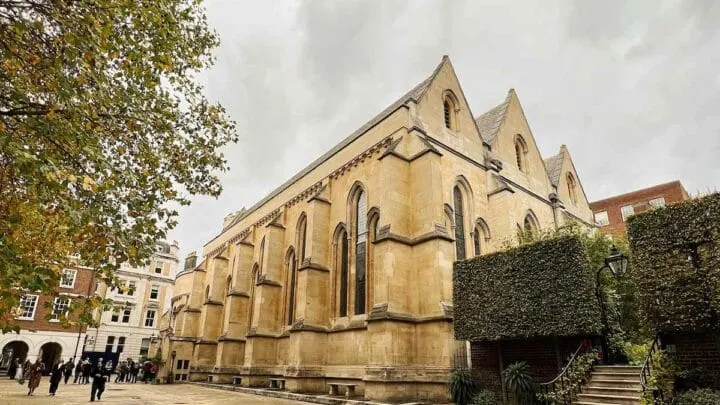Heard of London’s Temple Church? This unsuspecting building is steeped in fascinating history. Let’s explore.
Words by Olivier Guiberteau
London is blessed with an extraordinarily rich history… But now and again you come across a place where the past echoes that little bit louder than normal.
Let’s discover the curious tale of London’s Temple Church.
Why Visit The Temple Church?
Tucked quietly between buildings just off the north bank of the River Thames, the Temple Church in London is easy to miss.
It may not boast the expansive grandeur of St Paul’s or the regal opulence of Westminster Abbey, but this relatively simple round church built in 1162 AD has a dramatic tale to tell.
One which weaves together the mysterious Knights Templar, a document that formed the basis of common law around the world, a great debate that affected England’s religious direction, and not one but two raging infernos that decimated London.
Yes, this is a church, but it’s also so much more. This is where the story of London really lives.
The History of Temple Church
The Temple Church and The Knights Templar
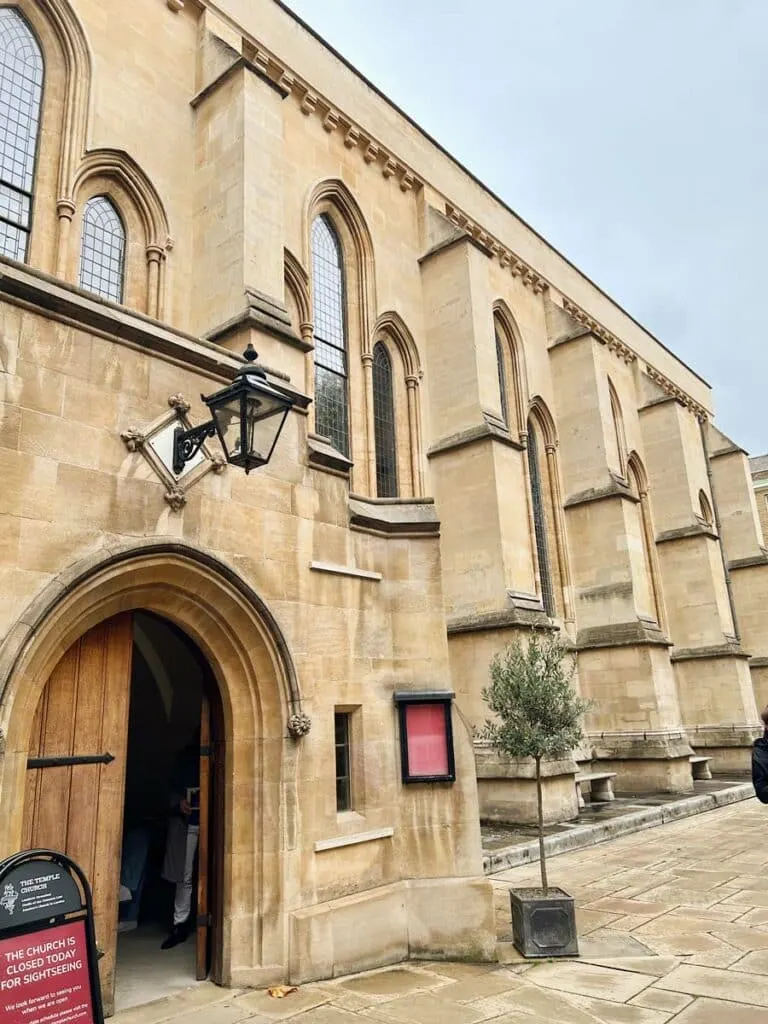
To begin the story of London’s Temple Church, we must start with an organisation that has enthralled and reviled since its formation in 1119 AD – but officially existed for less than two centuries.
Few groups throughout history can boast the same level of intrigue and hearsay afforded to the Knights Templar.
Thanks to the Da Vinci Code and its cinematic adaptation – which included scenes shot in the Temple Church – conspiracy theories surrounding the group remain as strong as ever.
Founded as a Catholic military order in the early 10th Century in Jerusalem, their role as crusading warriors was eventually replaced by what can only really be described as some of the earliest known bankers who cultivated an expansive economic structure across Christendom.
In Britain, the headquarters of the Knights Templar was originally in Holborn. But, as the organisation grew, so did its needs and a spot close to the River Thames was chosen not simply for a church, but also an area of residence and a military training ground.
Why is the Temple Church Round?
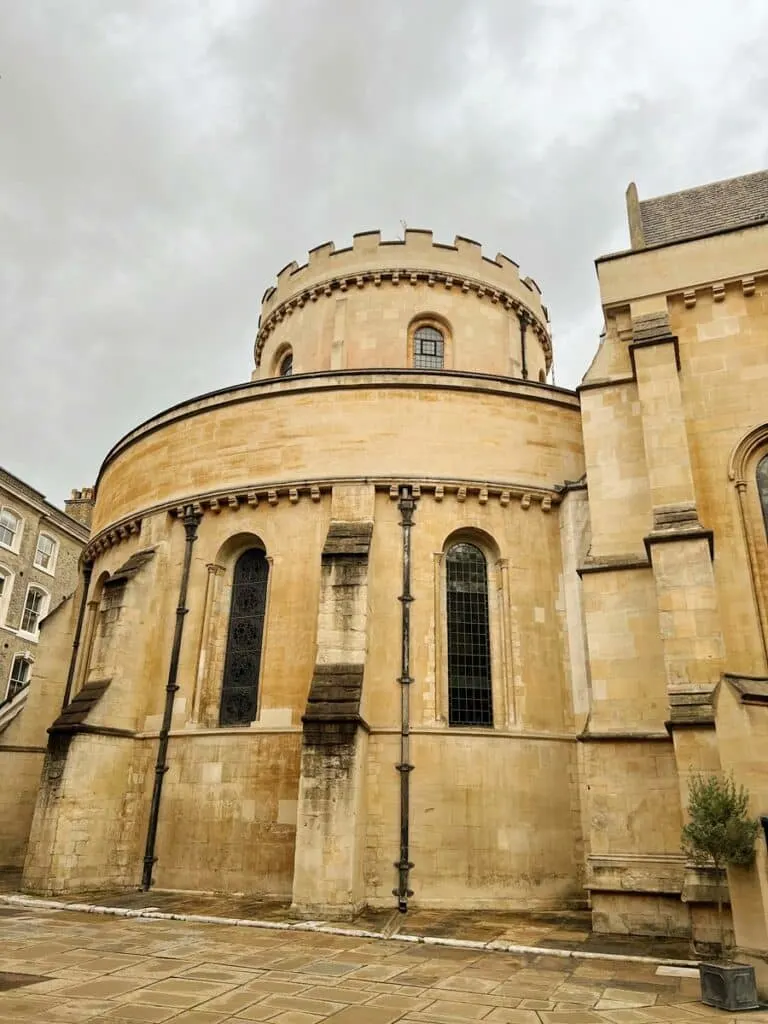
The church’s rare circular design was based on the Dome of the Rock which is part of the Temple Mount in the Old City of Jerusalem.
Completed in 1162 AD, but not officially consecrated until 1185 AD, the building initially known as The Round Church served as a base for the Knights Templar until the organisation was outlawed in 1307 AD.
For nearly 150 years, the church was not only a place of religious worship but also a discreet location where one could safely deposit money or jewels as a way of evading the monarchy’s frequent draconian attempts to raise capital.
It may have looked exactly like a church from the outside, but this was also the site of one of Britain’s first banks.
While the Knights Templars proved themselves to be the astute financial minds of the age, it was their powerful monetary influence – along with rabid gossip that would have put our modern tabloids to shame – that eventually led to their downfall.
Even so, before the Temple Church in London was confiscated in the early 12th Century, it hosted negotiations that led to the signing of a document that would eventually change the world… The Magna Carta.
The Magna Carta and The Greatest Knight
Now more than 800 years old, the Magna Carta supplied the blueprint for what we consider common law today.
A document that sought to curb royal authority and establish once and for all that whoever was on the English throne was not above the law. Despite its lofty place in British history, the initial Charter was a complete failure and needed to be re-issued three more times until it became enshrined.
The Magna Carta was created at a time of great turmoil in England with rebel barons facing down King John and the country teetering on the brink of civil war.
While the original document was signed at Runnymede on 15th June 1215 AD, many of the initial debates took place within the walls of the Temple Church. It was also from here that the Mayoral Charter was issued in May 1215 AD, which enshrined London’s right to appoint its own mayor on an annual basis.
Tombs in the Temple
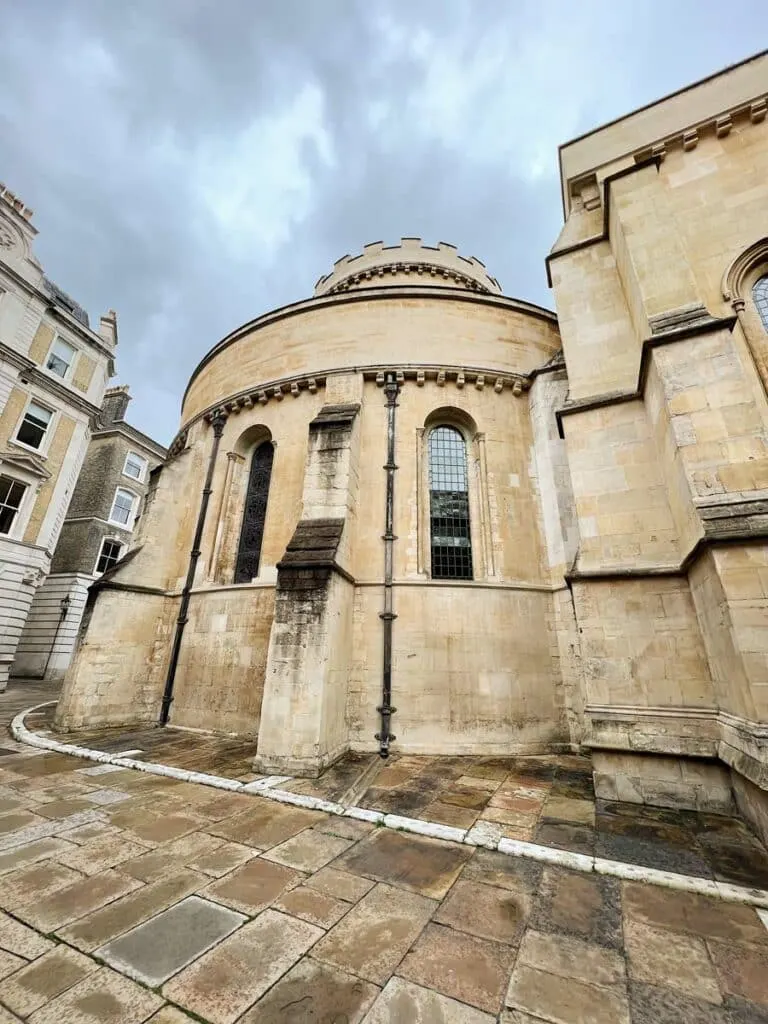
As you enter the Temple Church it’s impossible to miss the nine life-size marble effigies that are laid out on the floor. While the tombs don’t contain any remains, they are thought to have been added to commemorate members of the Knights Templar.
The most significant man immortalised in marble is William Marshal, the 1st Earl of Pembroke, who was instrumental in the negotiations between the King and the Barons in the lead-up to the signing of the Magna Carta.
After the death of King John, it was Marshal who was appointed regent of the kingdom and the protector of nine-year-old King Henry III, and it was he who twice re-issued the Magna Carta.
Shortly before his death, he was invested as a member of the Knights Templar and buried in the nave of Temple Church. His eulogy, read out by the English cardinal Stephen Langton, included the immortal line, “the best knight that ever lived.”
Seizure & The Battle of the Pulpit
In 1307 AD, the world of the Knights Templar came crashing down with widespread arrests and the confiscation of all its property. This included the Temple Church, which was eventually handed over to another Catholic military order, the Knights Hospitaller.
Things remained relatively calm for just over two hundred years until King Henry VIII abolished the Knights Hospitaller in 1540 and placed the church under the control of the crown.
With religious unease between Protestants and Roman Catholics on the rise, the Temple Church became the setting for one of the most famous debates of the English Reformation – known poetically as ‘the battle of the pulpit.’
Across four Sundays in 1586, puritan preacher John Travers and the more moderate Master of the Temple Richard Hooker traded ideological blows from the pulpit as they put forward their own religious vision of England’s future.
Perhaps with this sense of theatre in mind, William Shakespeare chose the Temple Church as the setting for the start of Henry VI Part 1.
Escape and Destruction
Two ferocious events have decimated London.
The first, the Great Fire, swept through the city in 1666 but remarkably the Temple Church escaped the fiery inferno. It was however completely refurbished by Christopher Wren as part of wider plans to rebuild the much-destroyed city.
Just over two and a half centuries later, carnage once again returned to the streets of London in the form of Hitler’s Luftwaffe.
On 10th May 1940, incendiary bombs set fire to the Temple Church and this iconic symbol of London was engulfed in flames that all but gutted the building.
Temple Church Today
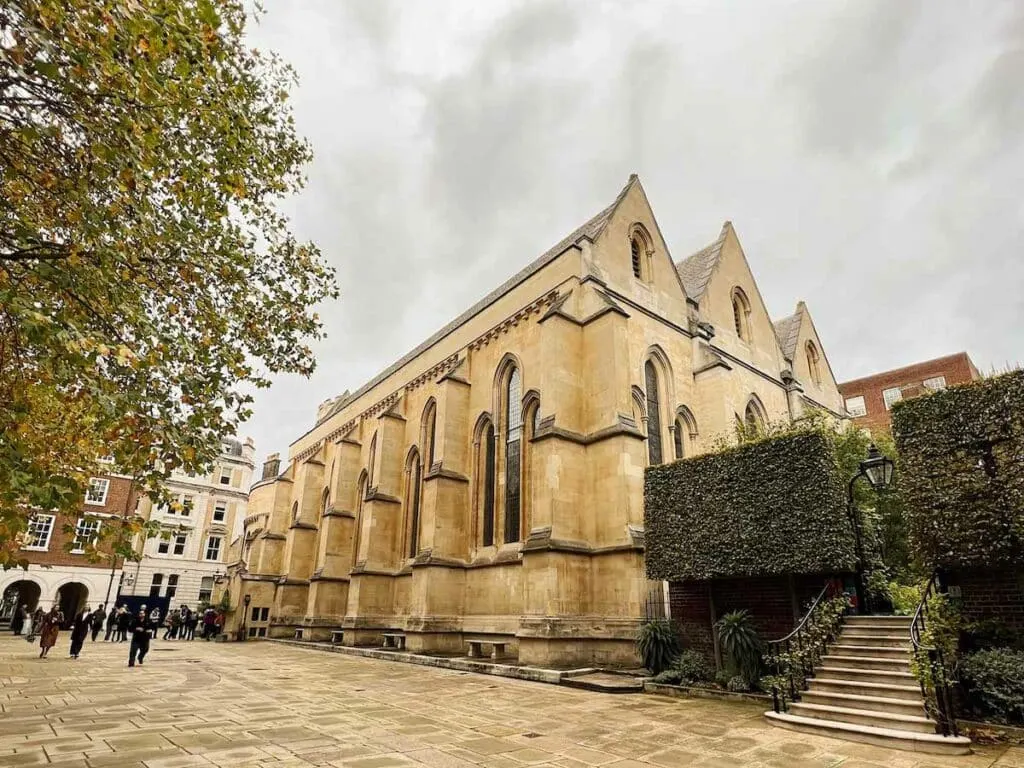
It was 17 years before the church was completely refurbished, and much of what we see today comes from these renovations.
Temple Church was rededicated on 7th November 1958 and, while it may have changed countless times during its nearly nine centuries of existence, it’s impossible not to get a sense of its dramatic history. This is a place where great things happened.
Practical Information for Visiting Temple Church
Address: Temple, London EC4Y 7BB, United Kingdom
Opening Times: The church is usually open Mon–Fri, 10.00 am–4.00 pm
Tickets: £5 or £3 concessions – Free to children, the Inns members, Inns’ and Chambers’ staff and their guests.

